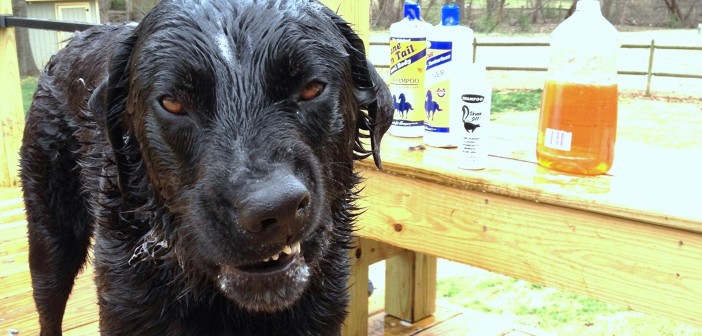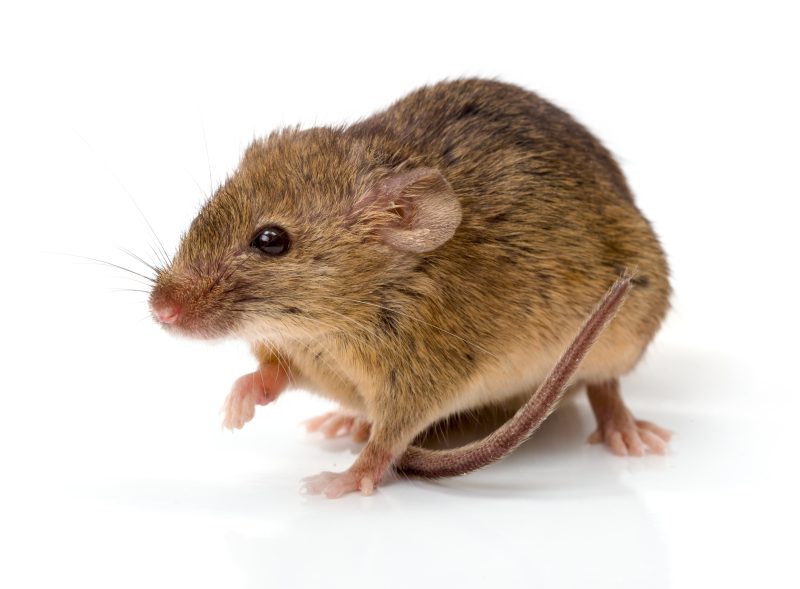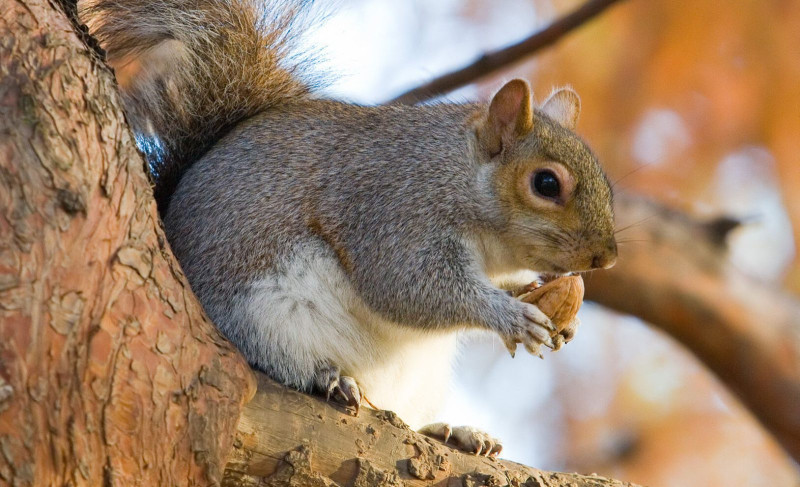How to remove skunk spray on pets
It’s unforgettable! You know how a skunk’s spray can stink just by driving past a dead one on the road. That distinctive smell is a mixture of sulfur-containing chemicals (methyl and butyl thiols) emitted from the skunk’s anal glands. Sulfurs not only smell bad, but they linger—so well, in fact, that they’re added to natural gas, which is odorless, so that we can smell a gas leak in our homes! They’re also what we smell on the tip of a burned match or when the Old Faithful geyser erupts.
It’s hard to neutralize sulfur. So if your pet gets sprayed, plain old soap and water won’t work. Dog shampoo won’t work. Scented shampoos won’t work. You’ve probably heard there are tomato juice recipes for dealing with skunk musk, but they don’t work, either, so don’t waste your time and energy. However, some hardware and pet supply stores products may work reasonably well.
Or, try the home recipe we recommend. From experience, we think it works better than anything else. Credit Paul Krebaum, a chemist, for creating this recipe, which was first published in 1993.
Before you do anything, check your pet’s eyes because skunk musk causes intense eye pain and is capable of causing blindness. If your pet’s eyes are tearing and red or it’s having trouble opening them, gently flush them for several minutes with lots and lots of eyewash. If none is on hand, use tepid water. Even with that, your pet’s eyes may be sensitive and swollen for a day or two.
Skunk odor-remover recipe
Mix the following in a plastic bucket or container with a wide mouth (the mixture will create pressure in a closed container, causing it to burst). Mix well and expect it to fizz like crazy.
- 1 quart (1 L) of 3% hydrogen peroxide (found in any drugstore)
- 1/4 cup (60 ml) baking soda (sodium bicarbonate, found in any grocery store)
- 1–2 teaspoons (5–10 ml) liquid dish soap (Dawn or Palmolive work well, but any similar soap will do)
For large pets, add one quart (1 L) of tepid tap water to allow for complete coverage. This formula works for people and clothing, too—which you may need after attending to your pet!
Use the mixture immediately. It will neutralize the chemicals in every hair it touches, so eliminating the odor is directly related to how well you wash your pet. Work the solution deep into the hair. Leave on for 5 minutes or until the odor is gone. In heavily oiled places, you may need to rinse and repeat. Don’t get the mixture in your pet’s eyes or mouth. If you must clean its face, put the solution on a cloth and carefully wipe around the eyes and mouth.
Don’t store leftover solution. Not only does it start losing effectiveness right away, but it may build up pressure and explode your container. Also, never use bleach on your pet or mix other products into this formula.
Do skunks always spray?
Skunks don’t spray unless they have to. Their musk is precious to them because it’s their only defense, and it takes a day or more for their body to produce a new supply. They’ll spray when taken by surprise or if they believe they’re under attack. Given enough time, they’ll try to warn you by hissing, stamping their feet, and lunging at you. They’re saying, “back off.” If one turns its backside to you, however, it’s time to run! Avoid confrontations by carrying a flashlight when stepping into unlighted areas of your yard at night. When they can see and hear you coming, they’ll move away. If you do come face to face with one, just slowly and quietly back away. The skunk won’t pursue you; it’ll go on its way.
A little bit about skunks and rabies
Skunks can catch rabies from the saliva of a rabid animal. It’s often assumed a skunk seen out in the daytime is rabid, but don’t jump to this conclusion too quickly. Although skunks are crepuscular, meaning they’re most active at dawn and dusk, they sometimes go out in the daytime to forage. Also, skunk babies will play outside their den during the day.
A skunk with rabies displays bizarre behavior: acting too tame or too aggressive, unsteady on its feet, confused, drooling, circling, mutilating itself, screeching, or paralysis. If you think a skunk is rabid, stay clear and call Animal Control. If you’re bitten or scratched, even by a skunk that seems healthy, see your medical provider immediately for treatment.
A little bit about orphaned skunks
A baby skunk doesn’t need to be rescued if it would take two hands to pick it up; that means it’s old enough to be on its own. Watch the baby for a while to ensure it’s truly an orphan; it might just be playing outside its den. If it’s an orphan, contact a licensed wildlife rehabilitator for help.
If it’s in imminent danger, here’s what to do:
- Wear thick gloves; a frightened skunk may bite.
- Approach it very slowly, making all your movements deliberate, with no sudden, jerky motions.
- Speak to it in a soft voice as you approach. Skunks have poor vision; your voice will help keep it calm. To startle it is to invite, shall we say, an odor management problem.
- Even very young skunks can spray, so remain facing it as you slowly and gently place a towel or blanket over it, then pick it up.
- Put it inside a secure box with air holes. Line the bottom with paper towels or a soft cloth to snuggle in. Keep the baby warm with a heating pad set on low, placed under half of the box (if it gets too warm, it can escape to the other half), and keep it in a dark place until you can get it to a licensed wildlife rehabilitator.
Is it OK to feed skunks?
Skunks are cute to watch from afar, but a regular source of food might convince them to nest nearby. In addition, they carry a discernible odor even when they haven’t sprayed anything. Imagine the smell of a mother and several babies living under your porch!





